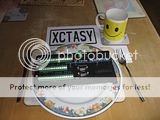I'm building replacement 3.3 and 4.1 liter engine blocks for use with Mikes alloy head. At present, I'm fitting a version of it to my 1997 Ford Explorer.
The purpose of this post is always to show how our old log head engines can be used in the 21st century. In my case, as an Australasian from New Zealand, I use the engines from 1970 to 1992 Australian Fords, and these are the 200/250/3.3/4.1 blocks, which either cross flow or non crossflow. They are tall deck 9.38" engines whioch were made in Geelong
The long term reason for the XPLOED project is to eventually create a street legal replacement engine for any 1960 on wards X-shell or S-shell Ford. To explain....What is internally known as X-shells are the coil over spindle XK 2000 platfrom cars like Falcons, Futuras, Fairlanes, Torinos, Cometes, Cougars Mustangs etc which aren't Fox chassis vehciles. These were made from October 1959 as 144 cubic inch Falcons, and until Octbober 1980 as Ford Granada/ Monarch's with 3.3, 4.1, 4.9 and 5.8 engines. In Australia, the platform continued in parallel using the XK internal reference from 1961 until 1988 as a XF Falcon/Fairmont/Fairlane/LTD sedan, and then till about 1999 as the XH Falcon utility (unibodyt pickup called a ute).
The S-shell is the Modifed MacPherson strut Fox Mustang/Capri/Cougar/Granada/LTD which weren't Panther or Mustang II or coil over spindle X-shells. They first came out on the 1978 Fairmont and technically continued through as long wheel base Lincoln LSC's till the early 90's and then ended up as the last SN95 in late 2004.
Collectively, excluding the scrapage rate, that could be about 10 million potential 3.3 or 4.1 donars.
The purpose of this post is always to show how our old log head engines can be used in the 21st century. In my case, as an Australasian from New Zealand, I use the engines from 1970 to 1992 Australian Fords, and these are the 200/250/3.3/4.1 blocks, which either cross flow or non crossflow. They are tall deck 9.38" engines whioch were made in Geelong
The long term reason for the XPLOED project is to eventually create a street legal replacement engine for any 1960 on wards X-shell or S-shell Ford. To explain....What is internally known as X-shells are the coil over spindle XK 2000 platfrom cars like Falcons, Futuras, Fairlanes, Torinos, Cometes, Cougars Mustangs etc which aren't Fox chassis vehciles. These were made from October 1959 as 144 cubic inch Falcons, and until Octbober 1980 as Ford Granada/ Monarch's with 3.3, 4.1, 4.9 and 5.8 engines. In Australia, the platform continued in parallel using the XK internal reference from 1961 until 1988 as a XF Falcon/Fairmont/Fairlane/LTD sedan, and then till about 1999 as the XH Falcon utility (unibodyt pickup called a ute).
The S-shell is the Modifed MacPherson strut Fox Mustang/Capri/Cougar/Granada/LTD which weren't Panther or Mustang II or coil over spindle X-shells. They first came out on the 1978 Fairmont and technically continued through as long wheel base Lincoln LSC's till the early 90's and then ended up as the last SN95 in late 2004.
Collectively, excluding the scrapage rate, that could be about 10 million potential 3.3 or 4.1 donars.


 . ~Steph/OO6.
. ~Steph/OO6.




























































